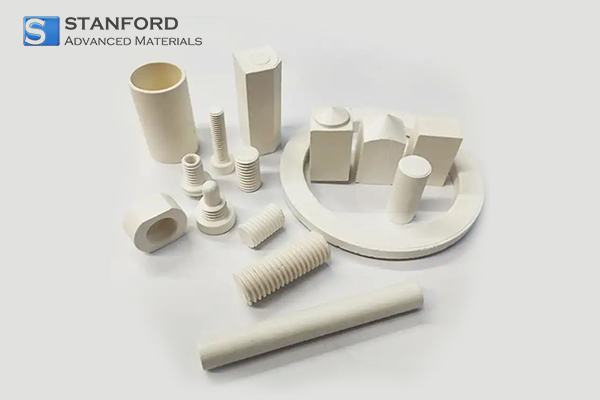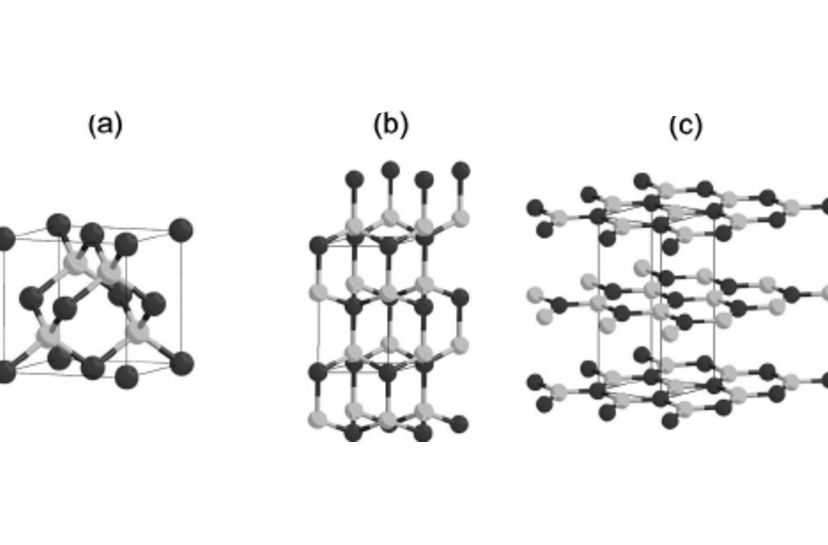Stanford Advanced Materials Advances Precision Machining With WBN
Introduction
Stanford Advanced Materials (SAM) is reporting a documented case regarding the application of Wurtzite Boron Nitride (WBN). This material is employed for its high hardness, thermal stability and impact resistance. The WBN‐based tooling developed by SAM assisted a precision machining company in resolving persistent issues with tool wear during intermittent turning operations on hardened steels.
Lisa Ross, Senior Ceramics Engineer at SAM, explains:
"Wurtzite BN composite materials, when reinforced with fine diamond particles, combine high fracture resistance with high heat endurance. This combination provides a measured advantage for advanced machining tasks."

Fig. 1 Custom components manufactured from Boron Nitride
Case Study on Wurtzite Boron Nitride
-The challenge: Tool wear under impact loading
A precision machining company, specialising in hardened steel components, encountered serious issues during intermittent high‐speed turning. The tools experienced premature failure because of chipping during interrupted cutting and thermal wear, particularly in applications using 100Cr6 bearing steel with a hardness of 61–63 HRC. The main technical problems included:
- Premature tool failure due to edge chipping under interrupted cutting.
- Excessive heat accumulation in the cutting zone.
- Inconsistent dimensional accuracy because of uneven wear.
- Increased production downtime as a result of frequent tool changes.
The company required a tool material that could resist thermal degradation and withstand the mechanical impacts arising from intermittent cutting.
Further Reading: HBN, CBN and WBN: A comparative analysis of Boron Nitride polymorphs
-SAM’s solution: WBN-Diamond Composite Inserts
Following a detailed review of the customer’s application, SAM recommended a specific cutting insert fabricated from polycrystalline Wurtzite Boron Nitride reinforced with nano-diamond particles. The material was selected because it combines the thermal conductivity of diamond with the impact resistance of WBN.
Key benefits of the WBN-diamond composite include improved heat management, as the diamond phase conducts heat away from the cutting edge, thereby reducing the local temperature by approximately 20%. The material achieved a measured hardness of up to 54 GPa. It also demonstrated resistance to abrasive wear and micro-chipping even under high-impact cutting conditions.
SAM provided technical guidance regarding cutting parameters, recommended sintering temperatures and the optimised diamond content of the inserts, thereby ensuring integration into the customer’s CNC machining processes.
-Implementation and Results
The WBN-diamond tools were evaluated during finish turning operations on hardened bearing steel. The test results were as follows:
- Tool life increased by over 300%, with the tools enduring multiple intermittent cutting cycles without edge chipping.
- The cutting zone temperature decreased by approximately 20%, thereby enhancing insert performance.
- Surface finish improved from Ra 0.6 µm to Ra 0.3 µm, meeting the aerospace component tolerances.
- Overall tool costs were reduced by 27% over a period of 3 months, as fewer tool replacements and reduced scrap levels were recorded.
What is Wurtzite Boron Nitride?
Wurtzite Boron Nitride is a high-pressure, high-temperature polymorphic form of boron nitride with a hexagonal crystal structure that transforms into a wurtzite form under defined extreme conditions. It is one of the hardest synthesised materials, with Vickers hardness values ranging from 24 GPa to over 50 GPa in composite form.
Key properties of WBN include:
|
Property |
Value |
|
Hardness |
~24–54 GPa (depending on phase and composition) |
|
Thermal Stability |
Up to 1 400 °C in inert atmospheres |
|
Chemical Resistance |
Inert with respect to iron, steel and nickel alloys |
|
Fracture Toughness |
Higher than that of diamond or cBN |
|
Electrical Specific Resistance |
>10⁶ Ω-cm |
WBN is typically produced as a powder or as sintered cutting inserts. It is increasingly deployed in high-precision machining operations where defined high impact loads cause conventional tool materials to fail.
Read more: Wurtzite Boron Nitride (w‑BN): Structure, Properties and Applications

Fig. 2 Crystal structure of BN in (a) the cubic zinc blende phase, (b) the wurtzite phase and (c) the hexagonal phase [1]
WBN vs. Diamond
Although both Wurtzite Boron Nitride and diamond are classified as superhard materials, they differ in industrial applications. Diamond, despite being the hardest known material, reacts chemically with ferrous metals at high temperatures. Consequently, its use in machining steels and iron alloys is limited. In addition, diamond is brittle and is prone to chipping under impact or interrupted cutting conditions.
In contrast, WBN exhibits excellent chemical stability with ferrous materials and improved fracture resistance. Therefore, WBN is more suitable for applications that encounter temperature fluctuations or intermittent contact. When WBN tools are combined with diamond in composite structures, the thermal benefits of diamond are retained while meeting mechanical reliability criteria.
Conclusion
Stanford Advanced Materials assisted a precision machining client in addressing tool degradation issues by utilising Wurtzite Boron Nitride. Technical composite WBN-diamond tools were provided alongside application-specific guidance, thereby extending tool lifetime, increasing process reliability and improving surface finish.
To learn more about WBN tools or to request a custom solution, please visit www.samaterials.com.
Reference:
[1] Janotti, Anderson & Wei, Su-Huai & Singh, Dr. (2001). First-principles study of the stability of BN and C. Physical Review B – Condensed Matter and Materials Physics. 64. 1741071–1741075.

 Bars
Bars
 Beads & Spheres
Beads & Spheres
 Bolts & Nuts
Bolts & Nuts
 Crucibles
Crucibles
 Discs
Discs
 Fibers & Fabrics
Fibers & Fabrics
 Films
Films
 Flake
Flake
 Foams
Foams
 Foil
Foil
 Granules
Granules
 Honeycombs
Honeycombs
 Ink
Ink
 Laminate
Laminate
 Lumps
Lumps
 Meshes
Meshes
 Metallised Film
Metallised Film
 Plate
Plate
 Powders
Powders
 Rod
Rod
 Sheets
Sheets
 Single Crystals
Single Crystals
 Sputtering Target
Sputtering Target
 Tubes
Tubes
 Washer
Washer
 Wires
Wires
 Converters & Calculators
Converters & Calculators
 Write for Us
Write for Us


 Chin Trento
Chin Trento


